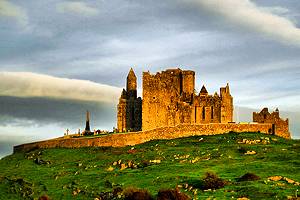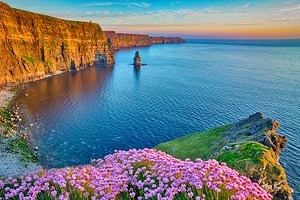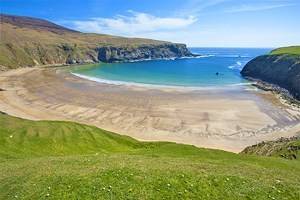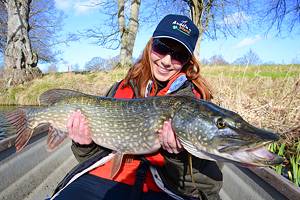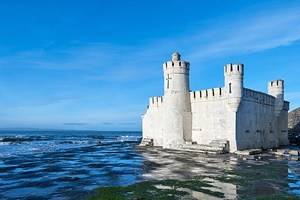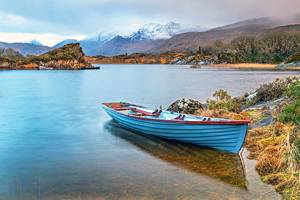Atlantic Bluefin Tuna & Coastal Fishing in Ireland
Since Ireland is surrounded by coastline, it is no surprise that fishing in the sea is popular for trout; salmon; Atlantic blue shark; and, more recently, the prized Atlantic bluefin tuna, which is making a comeback after years of declining populations due to overfishing.
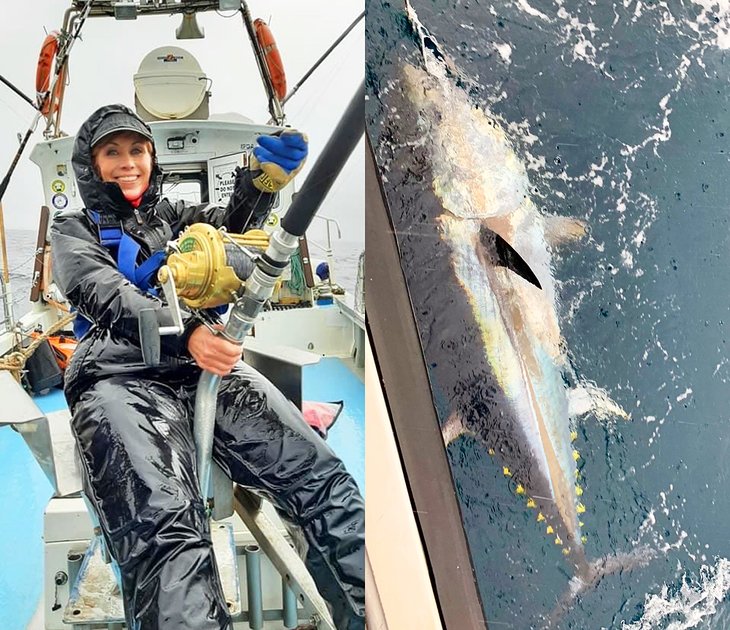
While each of Ireland's coastlines is appealing to anglers for different reasons, the northwest coast near Donegal and Killybegs offers anglers a unique opportunity to fish for the Atlantic bluefin tuna. The allure of the bluefin tuna, the largest tuna in the world, is its reputation of humbling even the most experienced angler because of its size, strength, and speed.
Ireland has a pilot tagging program in place to monitor returning populations, giving anglers a chance to catch and see this incredible species up close.
Restrictive measures for bluefin tuna catches established by the International Commission for the Conservation of Atlantic Tunas (ICCAT) permit a small number of captains in Ireland to catch, tag, and release the fish, collecting important data in the process that is reevaluated each year.
The bluefin tuna migration window off the Irish coast generally runs from late July through November, with August to October being the peak months based on previous tagging data. The larger fish generally arrive first in smaller numbers and increase as the migration window opens.
In Search of Migrating Bluefin Tuna
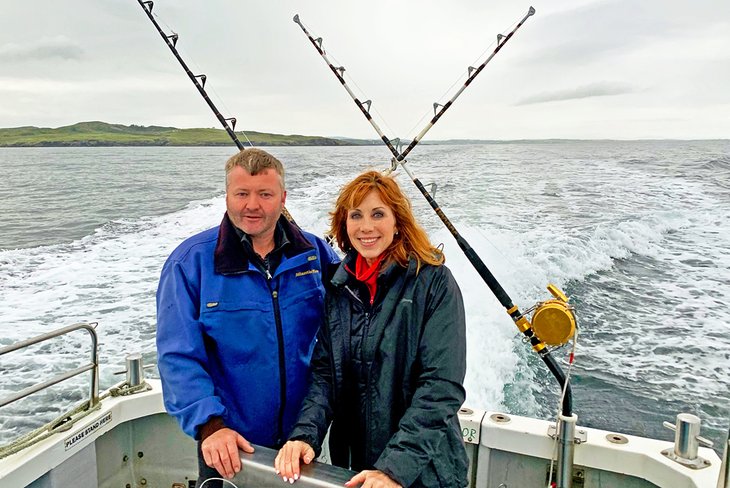
In search of more information about these graceful masters of the ocean, the conservation efforts to protect their populations, and the power that they harness, I set out to the west coast of Ireland to find out what makes the bluefin tuna such a standout in the angling world.
I join a couple of anglers and team up with Declan McGettigan and his father, Michael, of Killybegs Fishing Trips, out of Killybegs, Ireland, for four days at sea in early August to search for the first of the migrating bluefin tuna.
Regardless of your fishing experience or mental preparation, fishing for the behemoth bluefin is the kind of angling experience that nothing can quite prepare you for.
"The size, the power, and the fight are such an attraction for anglers," says McGettigan. "It is a bucket-list item, with so much adrenaline in the experience."
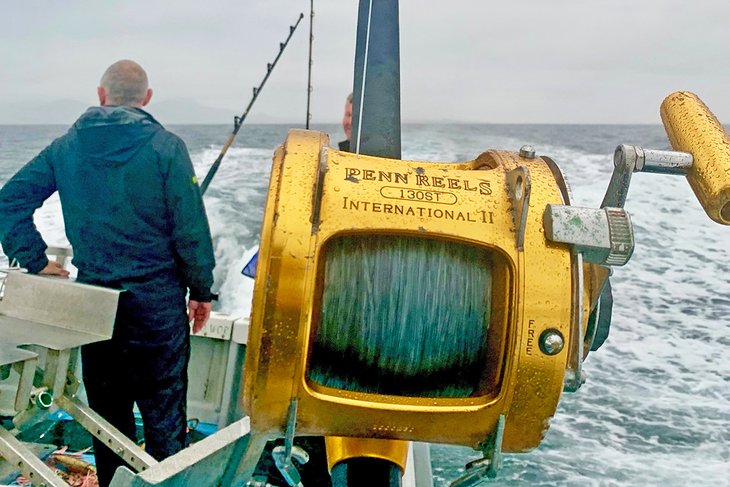
The bluefin tuna is one of the fastest, largest, and most powerful species in the sea. It is a stealth wanderer of the ocean, traveling at speeds up to 40 miles per hour with the force and strength of a machine-powered vessel weighing up to 1,500 pounds. They come to the Irish coastal waters to feed.
Booking multiple days for sea fishing gives me the best opportunity to catch a fish, when the migration numbers are fewer on the front end. This is advised any time of the year given the unpredictability of weather on the coast, which can easily cancel a day on a charter.
Our first day out in the Atlantic greets us with cloudy, rainy weather and some respectable sea swells as we head out from Killybegs. My angling pals and I had been counting down the hours in excitement, comparing expectations based on what we've heard and researched about bluefin.
The Equipment
Those expectations are quickly challenged by the sheer size of the tackle on board the Fiona Tee fishing vessel. Equipment used to catch and tag bluefin tuna must meet specific regulations required by the Inland Fisheries Ireland.
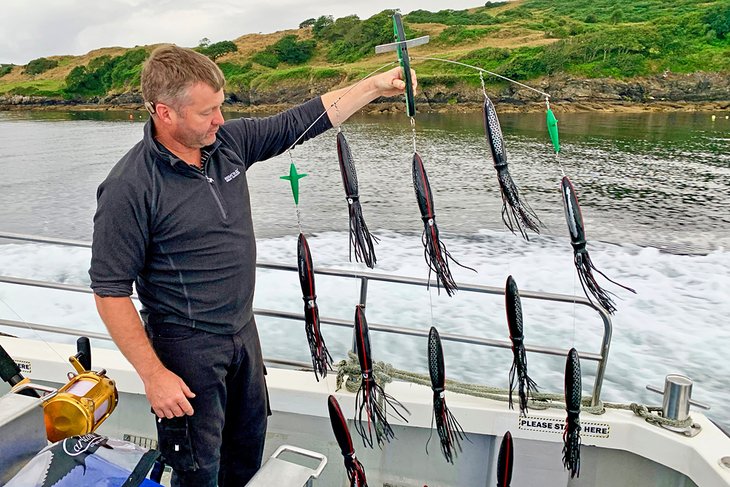
Several 130-pound class rods and Penn International reels sit in position on the back of the boat. My jaw drops when I see that just the reel was nearly the circumference of my thigh. The rods are equipped with 130-pound main lines and 600-pound leaders that support the colorful squid teasers on spreader bars that troll behind the boat. Two of the lines are placed on outriggers, and the middle rod is positioned directly off the stern.
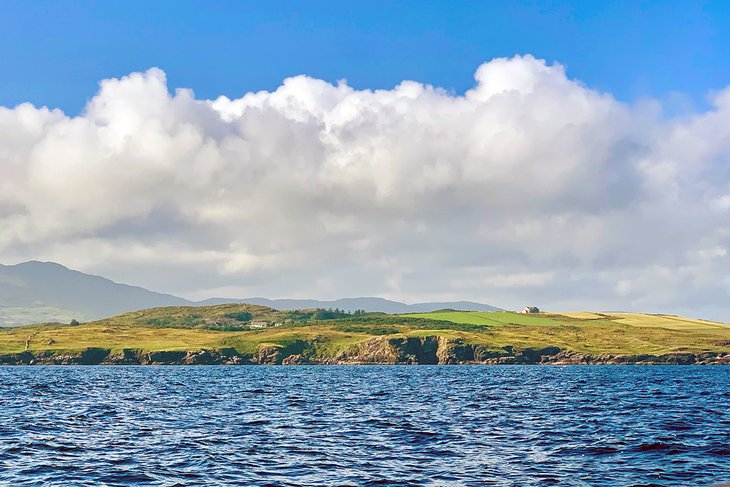
During the 17-nautical-mile journey to our first spot, I am reminded why fishing in Ireland is so magical beyond just the species in the waters.
A comforting green hue of grass contrasts the slate-colored stone along the jagged cliffs on the coastline. A minke whale in the distance makes a graceful appearance just above the ocean waves. Seagulls and shearwaters dance above the boat, gliding on the wing.
The fin of a sunfish appears, piquing our curiosity about the unusual and brilliantly colored disc-shaped fish below the surface. Pods of dolphins flank both sides of the boat, and more of them breach the surface in the distance, with acrobatic flips and dives zigging and zagging, welcoming us to nature's most spectacular playground.
To step into the undisturbed ocean world surrounded only by water is already rewarding, and we have yet to experience the rest of nature's surprises. As quickly as the sea life arrives to acknowledge our presence, it suddenly vanishes, and stillness moves in.

Filling time with conversation, McGettigan explains more about the bluefin tuna tagging program, telling me that none of his catches the previous year were tagged, meaning that each passing year, the populations of bluefin returning to Atlantic waters are growing. I inspect the small dart-like tag that is used for tracking. It is inserted into the dorsal fin of the fish and is used to collect data, which is combined with the physical measurements taken when a fish is alongside the boat.
Bluefin tuna pods can vary in size, and while the tagging numbers are increasing, it is difficult to determine if this is due to larger pods or more of them.
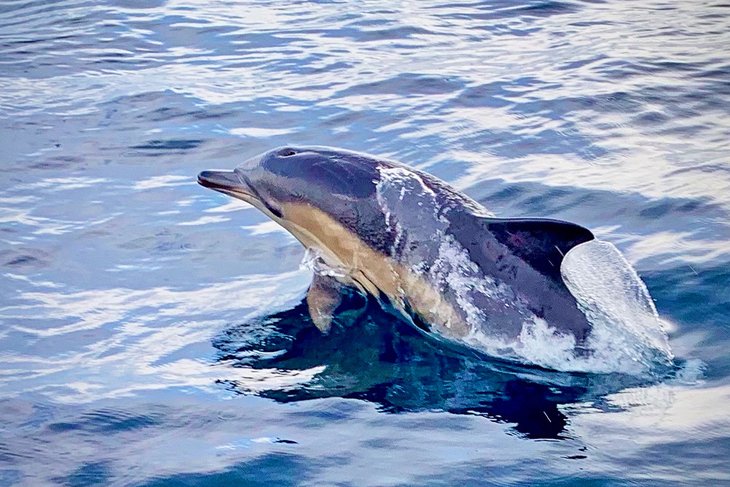
Mid conversation, about two hours into trolling, a certain energy changes in the air and catches the attention of all of us – a kind you could physically feel. First, the dolphins return around the boat, then we notice the seagulls coming in close to survey our teasers, and dozens of them swarming around a bait ball located just off the bow. The wildlife abruptly appears in an orchestrated manner with unusual energy that seems out of the ordinary. McGettigan explains that these are good signs.
"Most charters have state-of-the-art technology and equipment on-board, but the best measure for finding fish are the flying birds and feeding dolphins," said McGettigan.
The Strike of a Bluefin Tuna
We could all feel the strangeness in the atmosphere evolving, like anxious animals detecting an earthquake before it happens. What are the animals responding to? What do they know? What is this force of energy that registers like a shockwave down the deck of the boat?
Just then, an aggressive strike hits on the middle line from a massive tuna. Without pause, the fish screams off with the hook and line, torpedoing away from the boat as our building anxiety erupts into sheer chaos.
"Tuna!" screams McGettigan in an emergency tone, like someone shouting "fire" in a burning building. It was my line.
The fish is barreling away from the boat unrelentingly as if it is a car careening off the side of a cliff. The pouring rain and rocking boat challenges our reflexes. For the first time in my fishing life, I am shocked; overwhelmed; and, for a moment, paralyzed by the astounding level at which things are happening before I can even get to the rod. Time seems paused and accelerated at once.
Before there is even time to process the moment, McGettigan drapes me into a fighting harness, while the other two anglers reel in the additional lines.
I jump into the metal fighting chair that is bolted to the floor of the boat. My fighting harness is clipped into the backless metal chair from one side and into the reel on the other. In this moment, the fish, rod, reel, me, and the chair are one – sharing the force of the fight that I can physically feel through my entire body.
The "vroom, vroom, vroom" of the 130-pound mono line keeps ripping off the reel, going at the speed of a car.
I wear a heavy-duty glove to protect my left hand from the razor friction of the unspooling line and to help with eventually hand-balling the line, which is a method of physically pulling it in as I reel. But the chances to do that are few at the start.
From the first rotation of my reel, I can feel the brute force of the enormous 630-pound bluefin tuna on the end of my line. My excitement and nerves clash, humbling my resolve, and making me realize that I am no match for its unforgiving strength. Its power proves to me why bluefin tuna are apex predators of the Atlantic and the admired species of world-class ocean fishing.
"Wow!" McGettigan says, staring at the line on my reel vanishing before his eyes. "I've never seen so much line go so fast."
A half-mile of the line is gone in seconds during the first run. There is no choice but to let it keep going until I have a window of opportunity to reel. My hands slipping on the rod from the relentless rain and the pitch of the boat add to the challenge.
Every muscle in my body diverts energy into my right hand, desperately pushing up the handle of the reel. It won't turn – the force against it is just too much. I use my full body, pulling all the way back to a horizontal position, then bending forward and reeling with however many rotations I can get. My energy is stripped, and with each reprieve, the fish bullies its way back to dominance with another run.
There is little choice but to enlist the help of everyone on board, swapping turns at reeling with two hands and full-body strength, joining in a rhythm with me rocking my entire body backwards and forward.
"Back and go!" I holler to each person helping me, trying to cut through the noise of the rain and commotion.
We have to gain some ground on this fish, or we risk losing it with the tackle in tow due to its continued takes. We know this is a monster that ups the ante on the moment.
I pull back in the harness, and the fish hurls forward, pulling the line and rod with little effort. The force of its strength squeezes my body harness around my ribs with unimaginable force. I remember wondering if it is possible to break a rib from the squeezing pressure.

Eventually, the losing battle becomes a back and forth between me and the tuna – reeling line then losing it all again. A half-mile is a lot of line to retrieve, but after several long and exhausting runs, the fish seems to be getting closer to the boat. Eventually, we are able to secure it alongside the boat.
After getting unharnessed, I join my fellow anglers and crew to get a close-up view of this stunning creature of the sea for which I have a newfound respect.
The three anglers on board are experienced, and we all have ideas about how a bluefin fight would play out, but no one could have predicted this. The surprise of this fight surpasses any expectation of what I thought it might be like. This fight takes the fishing experience to another level.
As I stare at the large saucer eyes of the bluefin tuna, I can understand how it has such precision at targeting prey. It's no wonder the violent strike of the teasers was so aggressive. The tuna's solid and stealth-built body is masterful and built dynamically, enabling it to cut through deep water at tremendous speed. Its colors are vibrant blue and silver, accented by brilliant yellow on its tail.
"Most people go into this with the expectation of reeling in a fish. This is a true battle," says McGettigan. "Almost every fish requires reeling and hand-balling (manually pulling) the line. You hold on while the fish takes off. Most people are shocked at the power of this fish."
Tagging the Bluefin Tuna
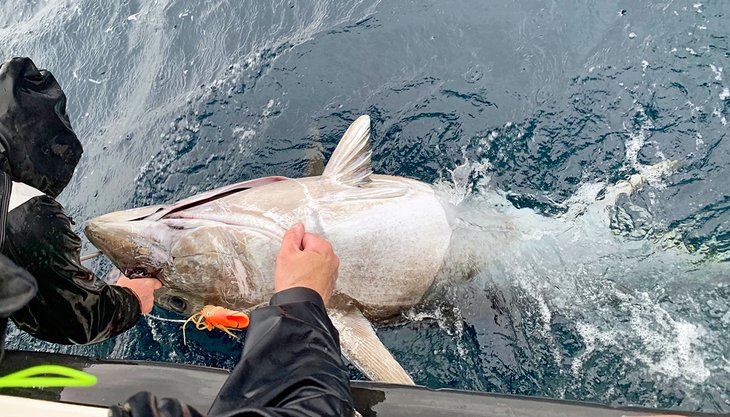
McGettigan tags the fin as Michael measures its length, all the while keeping the tuna safely in the water beside the boat. McGettigan records vital statistics into an electronic pad that will be used to monitor the movement of these bluefin migrations off the Irish coast. The data collected by the captains permitted to tag will help in the research efforts to understand the migration, distribution, and ecology of this iconic species of the North Atlantic.
After a few photos, we gently let it go with a new appreciation for nature's force and the unique opportunity that anglers have to view this species so intimately. The hard-core sea fishing for Atlantic bluefin tuna is not for the faint of heart, and while it will challenge advanced anglers, McGettigan says he's chartered for novices, too.
"As long as guests listen to the crew and can tolerate long days at sea, sometimes going many hours or days without a strike, almost anyone can enjoy the experience," says McGettigan.
Other Fish to Catch off the Coast of Ireland
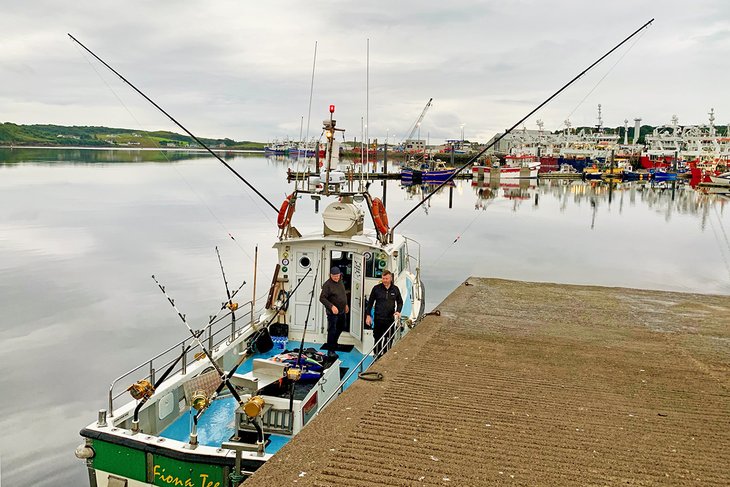
For anglers who want to fish the Irish coast but not necessarily go after bluefin tuna, there are many other types of sea fishing available. You can charter half-day fishing for mackerel, cod, pollock, and other species. While charters run all year, some of the best times for general sea fishing on the west coast are August and September for a wide variety of species.
You can reach Donegal or Killybegs by flying into the Dublin or Shannon airports and driving 3.5 to four hours to the coast. Other fishing departure points to consider in the north and northwest region besides Killybegs are Donegal Bay, Mullaghmore, Teelin, Bundoran, Clew Bay, Belmullet, and Sligo for blue shark (July to October) and other species throughout the year, including coalfish, pollack, gurnard, and ling.
While the northwest coast is popular for offshore fishing in the Atlantic, Ireland has great coastal opportunities in other regions.
Ireland's west coast has popular departure points from Galway, Kilrush, Killbaha, Carrigaholt, and areas along the Shannon Estuary. There is excellent shore angling for ballan wrasse, pollack, conger, mackerel, dogfish, ling, and bass, and it's one of the only places in Ireland where you can catch tope from the shore. Deep-sea angling for tope, blue shark, coalfish, gurnard, and thornback rays are popular.
The best times to fish the west coast for popular species are: tope, June to September; blue shark, July to September; bass and flounder, September to December; and thornback rays and bull huss are prevalent all year.
Sea fishing on Ireland's East coast offers shore fishing and sea angling for mackerel, pollack, conger, bass, dogfish, tope, and sea trout, as well as cod, ray, and whiting. Locations to use as a base along the east coast are Carlingford, Dundalk, Kilmore Quay, and South Wexford, where you can book a charter or fish from the shoreline.
The best times to fish for popular east coast species are: cod fishing, September to February; tope, July to September; bass, July to October.
Ireland's South and southwest coast is an angler's dream, with more than 50 species of fish to target, from cod and blue shark to sea bass and conger. Southern coast fishing spots in Ireland include South Wexford, Waterford Harbour, Dungarvan, Youghal, Kerry, Cork, Ballycotton, Kinsale, Courtmacsherry, West Cork, Mizen Peninaula, Beara Peninsula, Dingle, Fenit and Tralee Bay, and the Ring of Kerry. Each area has deep sea and shore fishing available year-round. Areas like Courtmacsherry are nice for sea wreck fishing.
If you are not sure where to fish, it is best to hire a regional guide who knows the best locations near you, and they generally include any permit fees in the price. For guide recommendations, permits and licenses, and general information about fishing conditions, refer to Inland Fisheries Ireland, which is the agency that oversees the conservation and management of inland fisheries and sea angling in Ireland.



